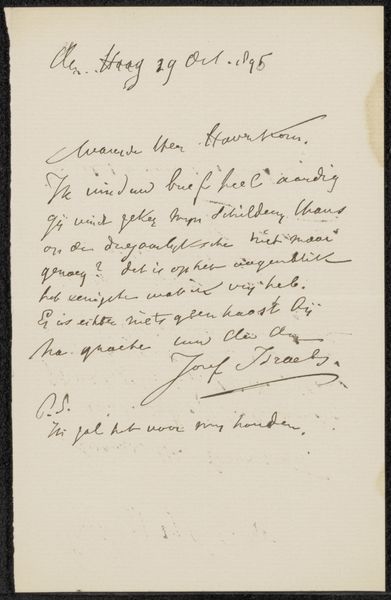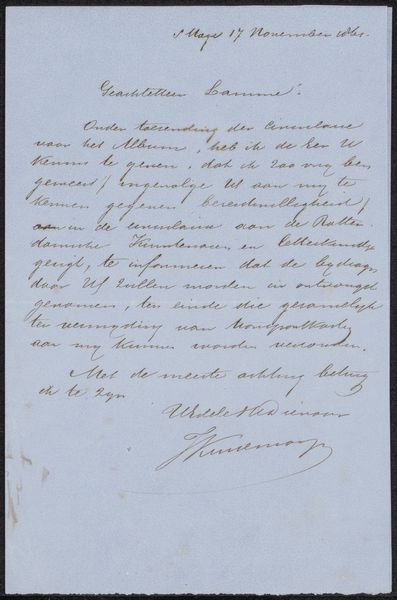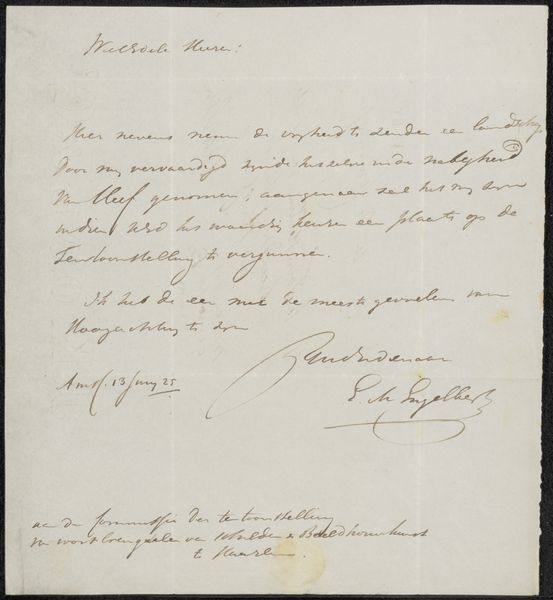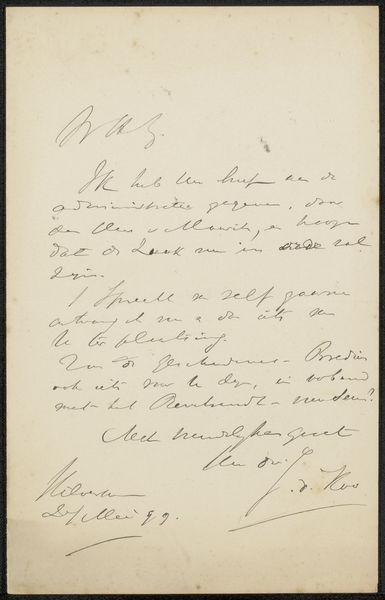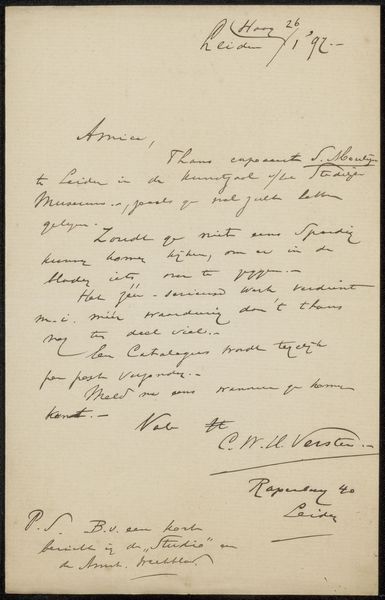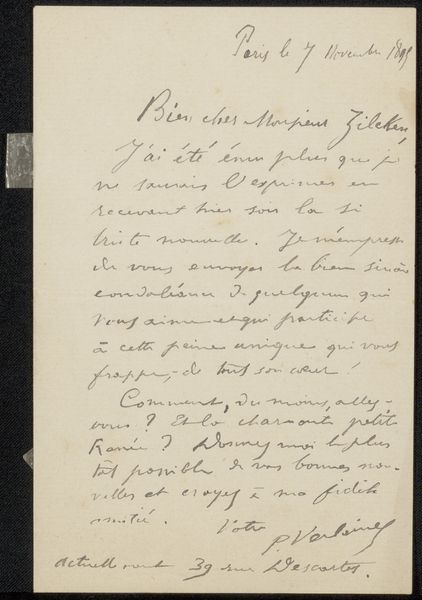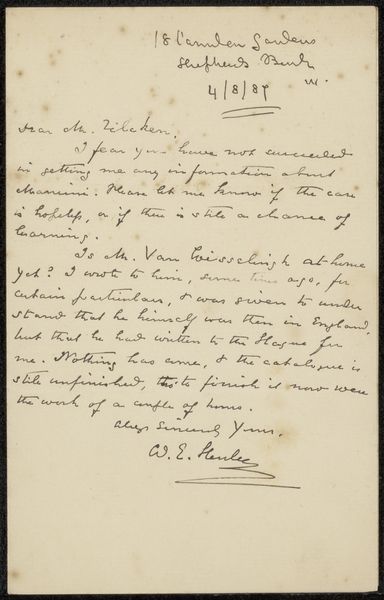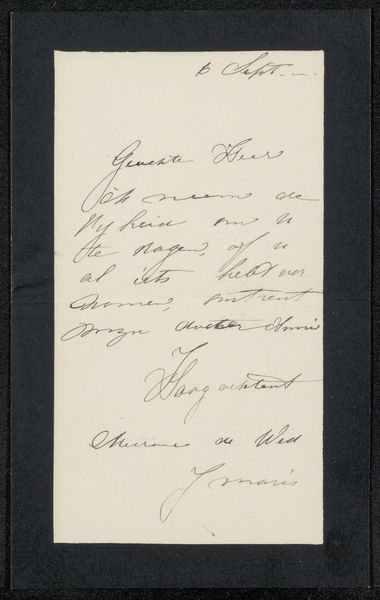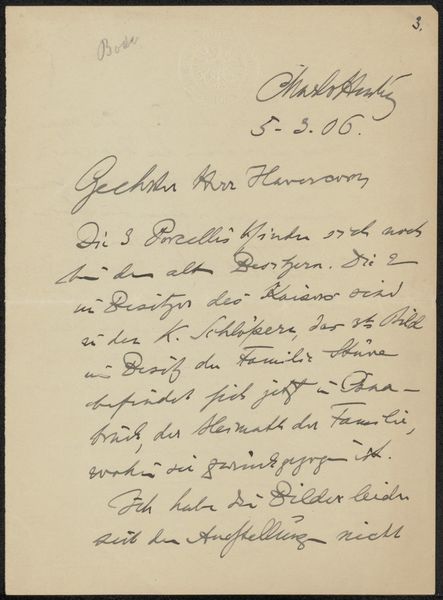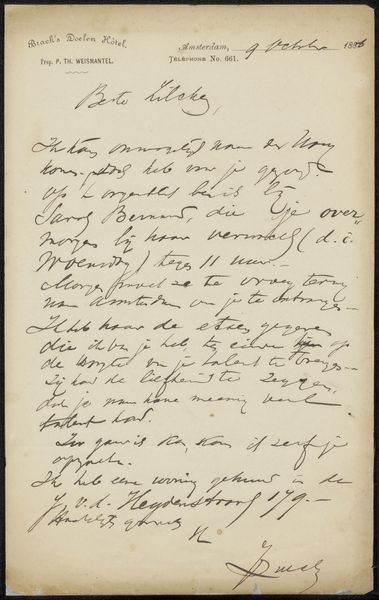
drawing, paper, ink, pen
#
portrait
#
drawing
#
hand-lettering
#
hand drawn type
#
paper
#
personal sketchbook
#
ink
#
hand-drawn typeface
#
intimism
#
fading type
#
ink colored
#
sketchbook drawing
#
pen
#
watercolour illustration
#
sketchbook art
#
watercolor
Copyright: Rijks Museum: Open Domain
Curator: What strikes me about Philip Zilcken's "Briefkaart aan Gustave Kahn," likely from 1911-1912, is its intimacy. It’s not a grand painting, but a personal, handwritten note. What do you make of its almost casual nature, its raw materiality? Editor: It does feel very immediate. This “Briefkaart aan Gustave Kahn,” created with pen and ink on paper, it's just a note, but its existence in a museum setting elevates it. How do you interpret its significance beyond being a simple message? Curator: For me, it's about access. Access to the artist's everyday life, to the intellectual circles of the time. Consider the context: early 20th-century Paris. Who was Gustave Kahn, the recipient? He was a symbolist poet, critic, deeply enmeshed in the avant-garde. Zilcken, by writing this card, situates himself within that network. Do you think the content of the message matters as much as the fact it exists at all? Editor: That's interesting. I was focused on deciphering the handwriting. But framing it as a document of connection, of belonging to a cultural movement, shifts everything. It’s almost like a glimpse into a private conversation that now informs our understanding of that era. What does Zilcken's choice of script communicate? Curator: Absolutely. The hand-lettering itself speaks volumes. It is a time capsule. It speaks to privilege but also labor; of a different, embodied way of communicating before typewriters were ubiquitous, before digital forms existed. And the fact that it’s preserved, suggests a conscious decision to archive these connections, highlighting their perceived value. Are there contemporary parallels that come to mind? Editor: Maybe social media exchanges between artists today? Quick, ephemeral, but potentially revealing about relationships and ideas. It highlights the potential historical importance of even the smallest interactions. Curator: Precisely. It compels us to reconsider what is worthy of preservation and what constitutes historical evidence. Editor: I'll definitely look at similar artworks differently now. It’s a good lesson that context and subtext can transform even a humble note into a valuable historical artifact. Curator: Indeed. By questioning these assumptions, we open new avenues for understanding not just art, but the intricate social and intellectual fabrics that birthed it.
Comments
No comments
Be the first to comment and join the conversation on the ultimate creative platform.
